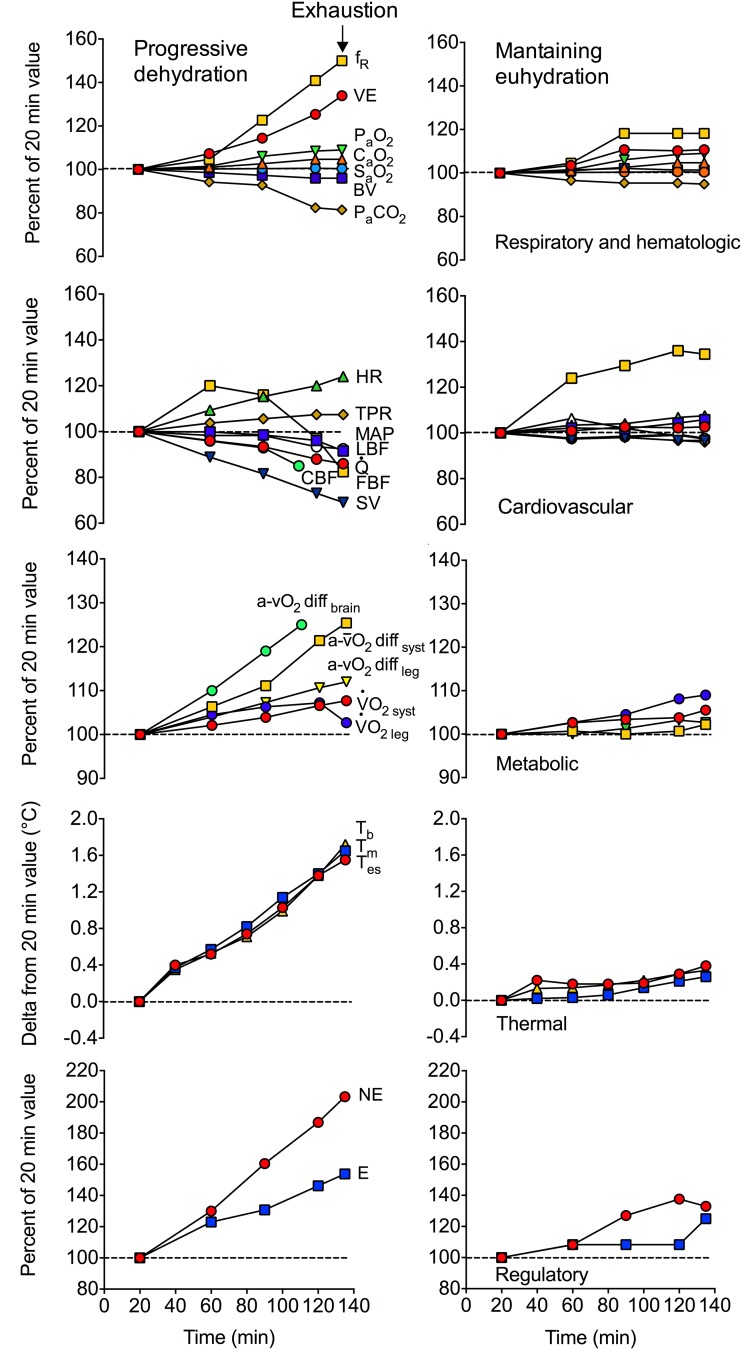Fig. 3.
Effects of progressive dehydration and maintenance of euhydration by fluid ingestion on respiratory, hematologic, cardiovascular, metabolic, thermal and regulatory responses to prolonged exercise and submaximal endurance capacity in the heat. The over-time physiological responses are reported as percentage of the 20-min exercise value, or in the case of the thermal responses the delta increase in regional temperature. The physiological responses were not different between trials at this reference time point, as participants’ hydration status was the same. Note, however, that progressive dehydration was associated with significant physiological and perceptual strain preceding exhaustion, as reflected by gradual hyperventilation, haemoconcentration, increased arterial oxygen content, arterial hypocapnia, cardiovascular strain with reductions in brain, contracting skeletal muscle and skin perfusion, cardiac output and perfusion pressure, core and active muscle hyperthermia, alterations in neural activity, increases in perception of effort, but to a large extent maintained exercising limb, brain and systemic aerobic metabolism owing to the corresponding increases in leg, brain and systemic in oxygen extraction. This contrasts with the apparent maintenance of physiological homeostasis and perception of effort during the euhydration trial, in which athletes could have continued cycling for some additional 15–60 min before reaching exhaustion. Drawn from mean data reported by González-Alonso et al. [26, 137]. The cerebral blood flow responses were drawn from data reported by Trangmar et al. [106]. fR respiratory frequency, VE ventilation, PaO2 arterial oxygen tension, PaCO2 arterial carbon dioxide tension, CaO2 arterial oxygen content, SaO2 arterial oxygen saturation, BV blood volume, HR heart rate, SV stroke volume, cardiac output, MAP mean arterial pressure, LBF leg blood flow, TPR total peripheral resistance, FBF forearm blood flow, CBF cerebral blood flow, a-vO2diffbrain arterio-venous oxygen content differences across the brain, a-vO2diffsyst systemic arterio-mixed venous oxygen content differences, a-vO2diffleg arterio-venous oxygen content differences across the exercising leg, systemic oxygen uptake leg oxygen uptake, Tb blood (femoral) temperature, Tm muscle (vastus lateralis) temperature, Tes oesophageal temperature, NE norepinephrine, E epinephrine

